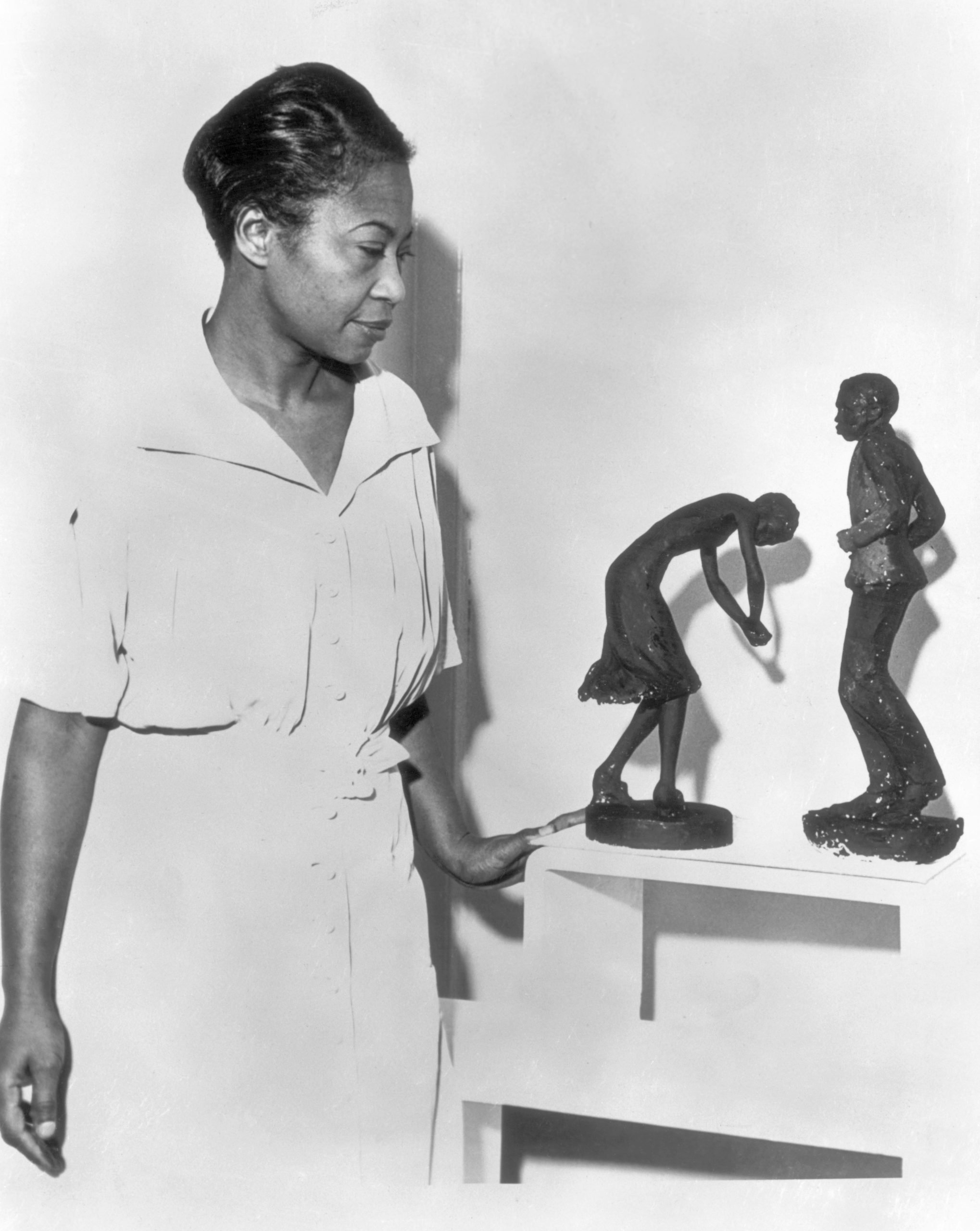
Few sculptures by Harlem Renaissance artist Augusta Savage have survived—though her legacy has. Though Savage died in obscurity, she’s deservedly remembered for her tenacity and powerful figures, and in the careers of her students such as Jacob Lawrence. There’s also her 16-foot sculpture Lift Every Voice and Sing (1939), a star artwork at that year’s World’s Fair in Queens, which was destroyed, but not forgotten.
The Harp by Augusta Savage at the 1939 New York World’s Fair in Flushing Meadows, Queens. Photo: Sherman Oaks Antique Mall/Getty Images.
Savage was born 1892 in Green Cove Springs, Florida. She yearned to be an artist early on, but her father, a poor minister, disapproved. “My father licked me four or five times a week,” she recalled, “and almost whipped all the art out of me.” Savage got married in 1907 and had a daughter in 1908. Her husband died soon after. In 1915, her family moved to West Palm Beach, and Savage married a carpenter. She didn’t sculpt again until 1919, when a local potter lent her clay, which she used to sculpt a series of figures that clinched a prize at the West Palm Beach County Fair. Emboldened, Savage tried starting a bust business in Jacksonville, but didn’t find buyers. She divorced, left her daughter, and moved to New York.
At the height of the Harlem Renaissance, Savage sculpted W. E. B. Du Bois and Marcus Garvey—and married the journalist Robert Lincoln Poston, before his death only a few years later. In 1923 she won a scholarship to Paris’s Fontainebleau School, only to have it rescinded when the academy learned she was Black. In 1929, an expressive bust of her nephew titled Gamin won Savage the fellowship that finally got her there. She returned to Harlem in 1932, and in 1937 became the first director of the Harlem Community Art Center.
That year, the World’s Fair offered Savage $360 to craft a sculpture celebrating the Black community’s musical contributions to grace their 1939 edition. Though the event promised to be more egalitarian than the rest of America, she was the only Black woman included. She left her job to complete the commission over two years.
Augusta Savage presenting a miniature of Lift Every Voice and Sing (1939) to Grover A. Whalen, president of the New York World’s Fair Corporation, 1939. Photo: Bettmann / Contributor.
Savage’s effort, titled Lift Every Voice and Sing, highlighted spirituals in plaster treated to resemble basalt. Twelve singers formed the strings of a harp, the body of which body represented the hand of God, with a kneeling boy in the foreground. Savage had reportedly titled the work after the spiritual hymn of the same name, colloquially known as the “Black National Anthem.” The fair retitled it The Harp.
The work struck the fair’s 44 million attendees. One Baltimore-based newspaper wrote: “Miss Savage’s creation stands in a niche at the focal point of the building front and is commented upon by practically everyone.”
A bronze maquette of Lift Every Voice and Sing by Augusta Savage at the “Artship” in Oakland, CA. Photo: Michael Macor / The San Francisco Chronicle via Getty Images.
Savage’s slim funding often relegated her to frail materials. She couldn’t afford to have works reproduced in hardier metals like bronze. Traditionally, all artworks in the World’s Fair were bulldozed once the event concluded. Save for souvenir maquettes sold during the show, that’s the last time the world saw The Harp.
Upon completing the sculpture, Savage found her former job had been filled. She tried founding the country’s first Black art gallery, but left Harlem behind once the eccentric writer John Gould started stalking her. From 1945, she would live in relative seclusion in Saugerties, New York, where she wrote and sculpted sparingly. She died in 1962 shortly after moving back to New York.
Today, a park bearing the original name of Savage’s lost masterpiece is underway in Jacksonville, which will center on a life-sized iteration of Lift Every Voice and Sing.
What’s the deal with Leonardo’s harpsichord-viola? Why were Impressionists obsessed with the color purple? Art Bites brings you a surprising fact, lesser-known anecdote, or curious event from art history. These delightful nuggets shed light on the lives of famed artists and decode their practices, while adding new layers of intrigue to celebrated masterpieces.